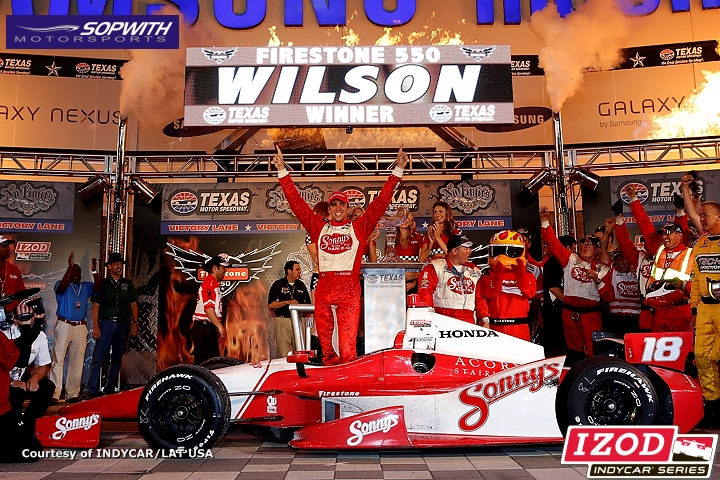INDYCAR: What’s Next?
 |
| Justin Wilson at Texas |
For weeks I’ve been listening to every media pundit and armchair racer debate what IndyCar should do next. Their TV ratings are in the tank, they just fired a semi-popular CEO without cause, they literally can’t give away tickets to a short oval race and they’re hemorrhaging cash at an appalling rate.
Everyone is offering an idea. The ideas vary, of course, but they all have one thing in common: everybody wants IndyCar to “do" something.
But when things are going haywire, sometimes it’s best to stop, back up, and try to see the big picture.
Instead of perpetually asking what IndyCar should “do" to fix this or that, perhaps we should question the wisdom of the series doing anything at all. Truth be told, every act that American open wheel racing has committed in the last 15 years has only taken us from bad to worse.
Maybe “doing something" isn’t the answer. Perhaps it is the problem. Let's look at a few other recent “do something" moves.

The rule allowing “push to pass" buttons hasn’t really allowed anyone to pass. The rule allowing three engine manufacturers has given us only two engine manufacturers, each selling overpriced V6’s that require a turbocharger to make a puny 600 horsepower and blow up after only 1,800 miles.
The rule forcing everyone to use Firestone “red" tires has had little effect. The series tinkered with the turbo boost rules before and after the Indy 500 trying to artificially manufacture the “right" speeds. They instituted a ridiculous Formula One-like “105% rule" at Indy that essentially gave us a 31-car race instead of 33.
All of this stems from the mistaken belief that the IndyCar series is a master rather than a servant.

Adding more rules clearly isn’t the answer. For crying out loud, the IndyCar rules package feels more like a phone book. If God Almighty could run an entire nation with ten rules, why does IndyCar need 198 pages of them to manage a few dozen cars?
If adding rules were the answer, there would never have been a problem. We’ve already got rules, rules about our rules, rules on how to interpret our rules, and rules on who can make more rules.
So here’s what I believe IndyCar should do: nothing.
In fact, it’s time to go in reverse.
Cut the rulebook to one page. Cars must be no longer than eighteen feet and no wider than twelve. Tires must be no wider than 10 inches. No more than 300 square inches of wing may be on the car. Any surface on the car that is not parallel with or perpendicular to the ground is a wing regardless of size or location.
There. All done.
Got an old USAC champ car? Sure, bring it out. Never know, you might make the race. An old Infiniti-powered G-Force, or maybe a Rolex prototype? No problem. Take the wings off, mount 10-inch tires and let’s go racing.
At least one hundred car and driver combinations would show up to make qualifying attempts for the 2013 Indianapolis 500. Guaranteed. I would be one of them. The garage area would be overflowing with Indy 500 hopefuls. You know… like it used to be… when an IndyCar was a car that raced at Indy, not a series.
IndyCar should simply stop telling people what to do. Adding more rules isn’t the answer. It’s the problem. Forcing people to buy engines, tubs and tires from a single source hasn’t controlled costs, it hasn’t expanded the field and it hasn’t produced a new golden age for open wheel racing. On the contrary, IndyCar can barely muster 33 cars for its own 500.
Glorified spec racing has had a decade to do something other than fail. It’s time to relegate it to the dustbin of racing history and liberate the most over-regulated sport on the planet.
What should IndyCar do? Nothing. Just tear up the rulebook and get out of the way.
Stephen Cox

